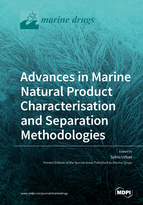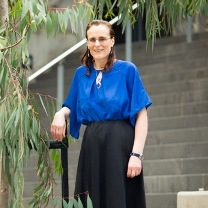Advances in Marine Natural Product Characterisation and Separation Methodologies
A special issue of Marine Drugs (ISSN 1660-3397).
Deadline for manuscript submissions: closed (30 November 2018) | Viewed by 47254
Special Issue Editor
Interests: marine and terrestrial natural products chemistry; isolation and structural characterization; NMR spectroscopy; analytical separation methodologies
Special Issues, Collections and Topics in MDPI journals
Special Issue Information
Dear Colleagues,
The search for bioactive marine natural products calls upon the need for efficient chemical profiling strategies together with the need to make advances in separation and characterization methodologies in order to expedite their discovery. This Special Issue of Marine Drugs aims to highlight advances in extraction, isolation, purification and dereplication methodologies in the quest for bioactive marine natural products.
Dr. Sylvia Urban
Guest Editor
Manuscript Submission Information
Manuscripts should be submitted online at www.mdpi.com by registering and logging in to this website. Once you are registered, click here to go to the submission form. Manuscripts can be submitted until the deadline. All submissions that pass pre-check are peer-reviewed. Accepted papers will be published continuously in the journal (as soon as accepted) and will be listed together on the special issue website. Research articles, review articles as well as short communications are invited. For planned papers, a title and short abstract (about 100 words) can be sent to the Editorial Office for announcement on this website.
Submitted manuscripts should not have been published previously, nor be under consideration for publication elsewhere (except conference proceedings papers). All manuscripts are thoroughly refereed through a single-blind peer-review process. A guide for authors and other relevant information for submission of manuscripts is available on the Instructions for Authors page. Marine Drugs is an international peer-reviewed open access monthly journal published by MDPI.
Please visit the Instructions for Authors page before submitting a manuscript. The Article Processing Charge (APC) for publication in this open access journal is 2900 CHF (Swiss Francs). Submitted papers should be well formatted and use good English. Authors may use MDPI's English editing service prior to publication or during author revisions.
Keywords
- Natural Products
- Drug Discovery
- Chemical Profiling
- Spectroscopy
- Chromatgraphy







